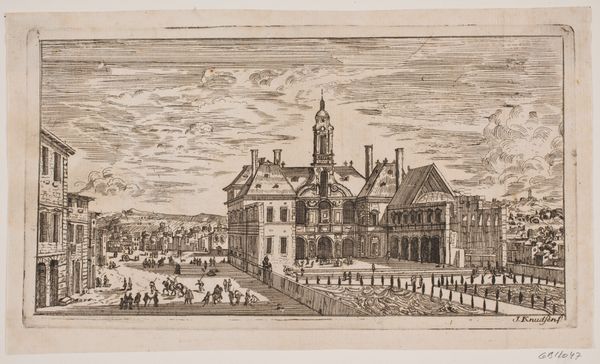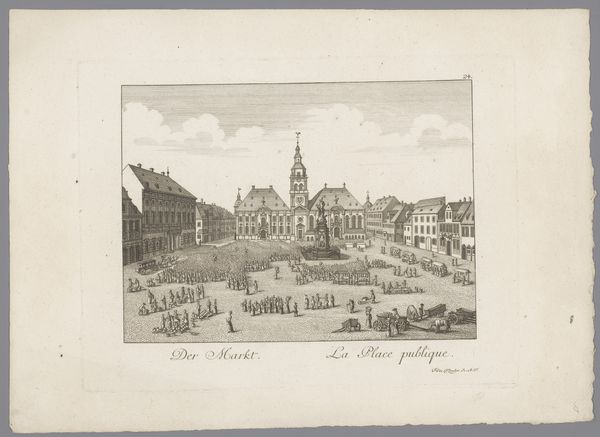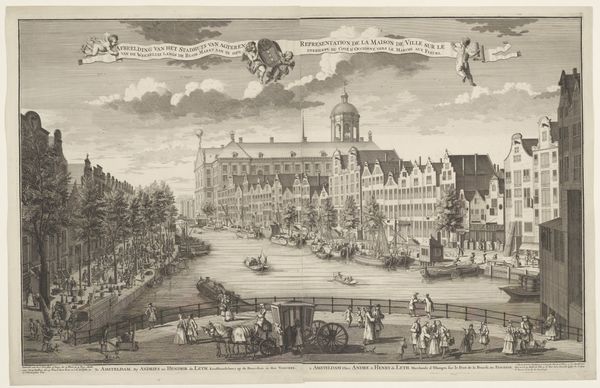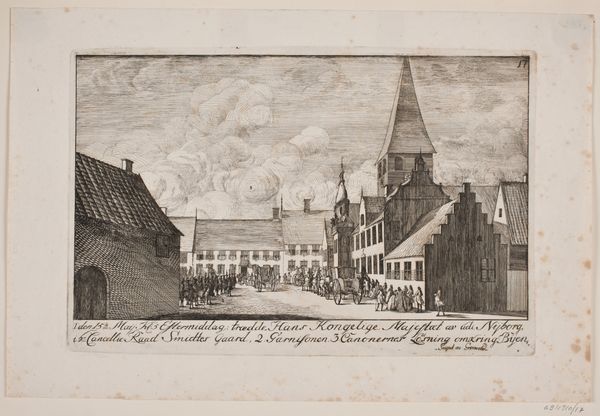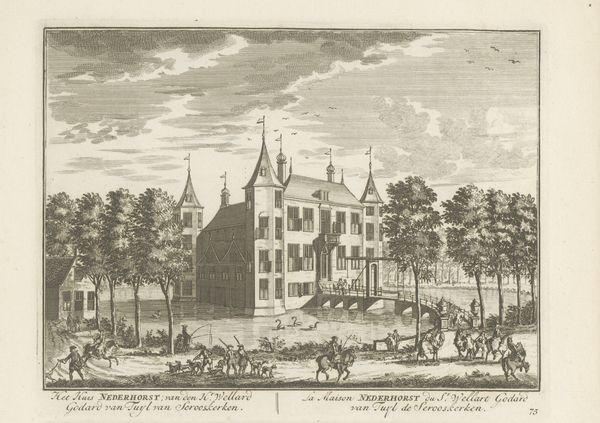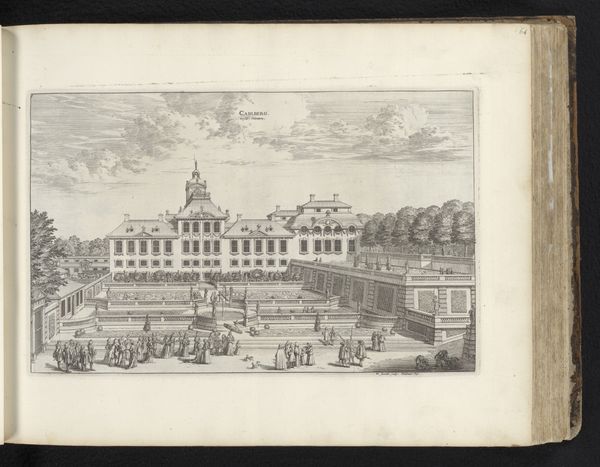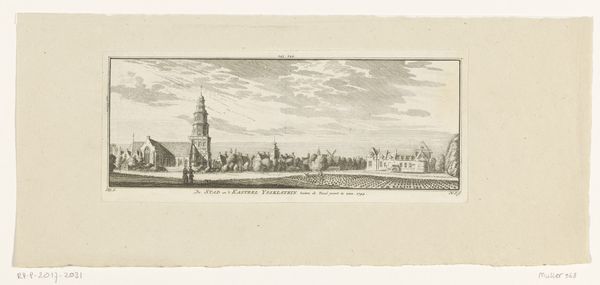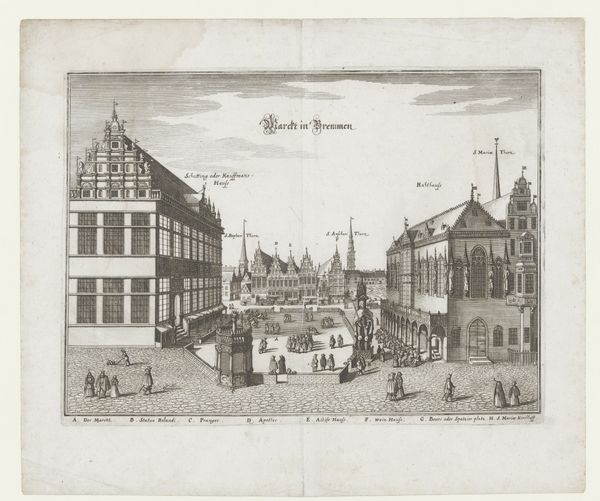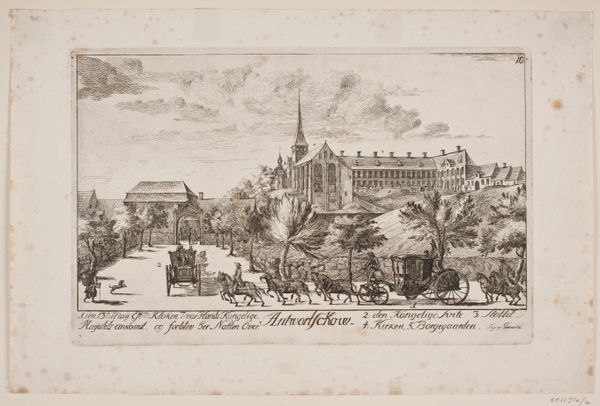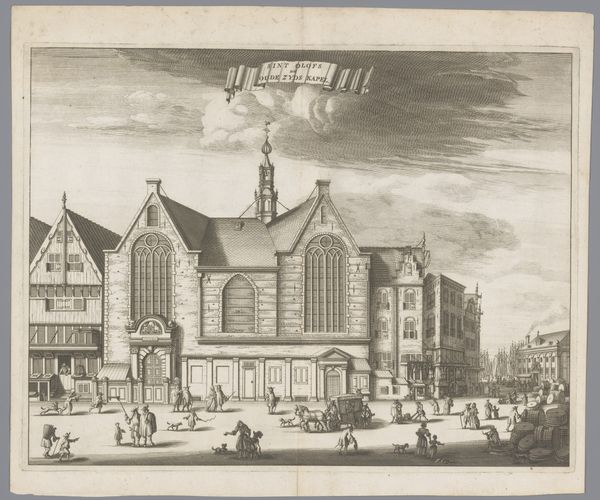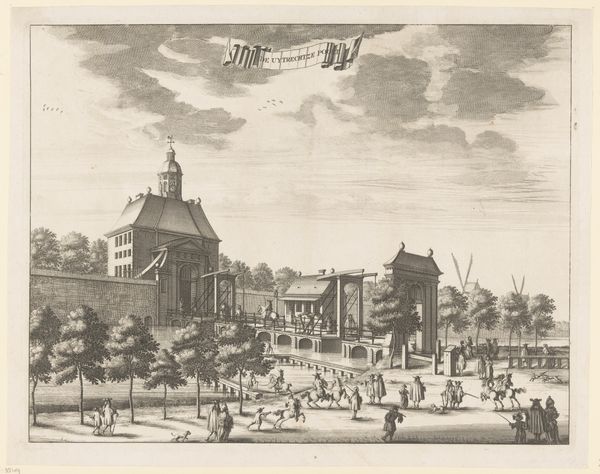
print, etching, engraving
# print
#
etching
#
landscape
#
etching
#
cityscape
#
engraving
Dimensions: 223 mm (height) x 349 mm (width) (plademaal)
Curator: Today we're looking at "Ringsted," an etching and engraving from 1749 by Poul Isac Grønvold. It's part of the collection at the Statens Museum for Kunst. Editor: It has this sort of melancholic atmosphere about it, doesn't it? A muted palette of sepia tones depicts what looks to be a street scene receding into the distance. The lines, particularly in the rendering of the buildings, seem incredibly precise, almost architectural. Curator: Indeed. The lines demonstrate expert craftsmanship and allow for a sophisticated balance and interplay of light and shadow. Focus how the structural integrity of the buildings and their repetitive shapes determine the spatial design and atmospheric tension of the cityscape. Editor: But consider the broader narrative. "Ringsted" offers a glimpse into the architecture and infrastructure after a significant fire that shaped the town. One has to consider issues such as access to rebuilding resources in Ringsted and the uneven reconstruction process after a catastrophe. Look at the horse-drawn carriages–a subtle reminder of class distinctions, or who was impacted most and was able to resume 'normal' life quickly. Curator: That's a valid interpretation. Although such social analysis tends to detract from understanding that the engraving serves as a testament to formal design. What message about Danish identity do those aesthetic choices portray? Editor: I see Grønvold not just chronicling post-fire construction; he inadvertently documents a nascent socioeconomic rift being forged, right there on Ringsted’s main thoroughfare. Perhaps the town’s physical recovery belies its community resilience – or highlights the fractures revealed in disaster? Curator: One can also appreciate the sheer artistry of replicating textures and forms so meticulously, consider, for instance, the contrast between the roughness of the building frameworks and the smooth expanse of the sky. It provides an optical interplay for the eye. Editor: All the same, what does that interplay signify in light of historical circumstance and human experience in the context of uneven community aid after that specific devastating event? Curator: A valid counterpoint. Both readings certainly allow a new appreciation for this early Danish cityscape etching. Editor: Exactly, appreciating art like "Ringsted" comes from confronting that tension, acknowledging what persists in our contemporary existence today.
Comments
No comments
Be the first to comment and join the conversation on the ultimate creative platform.
